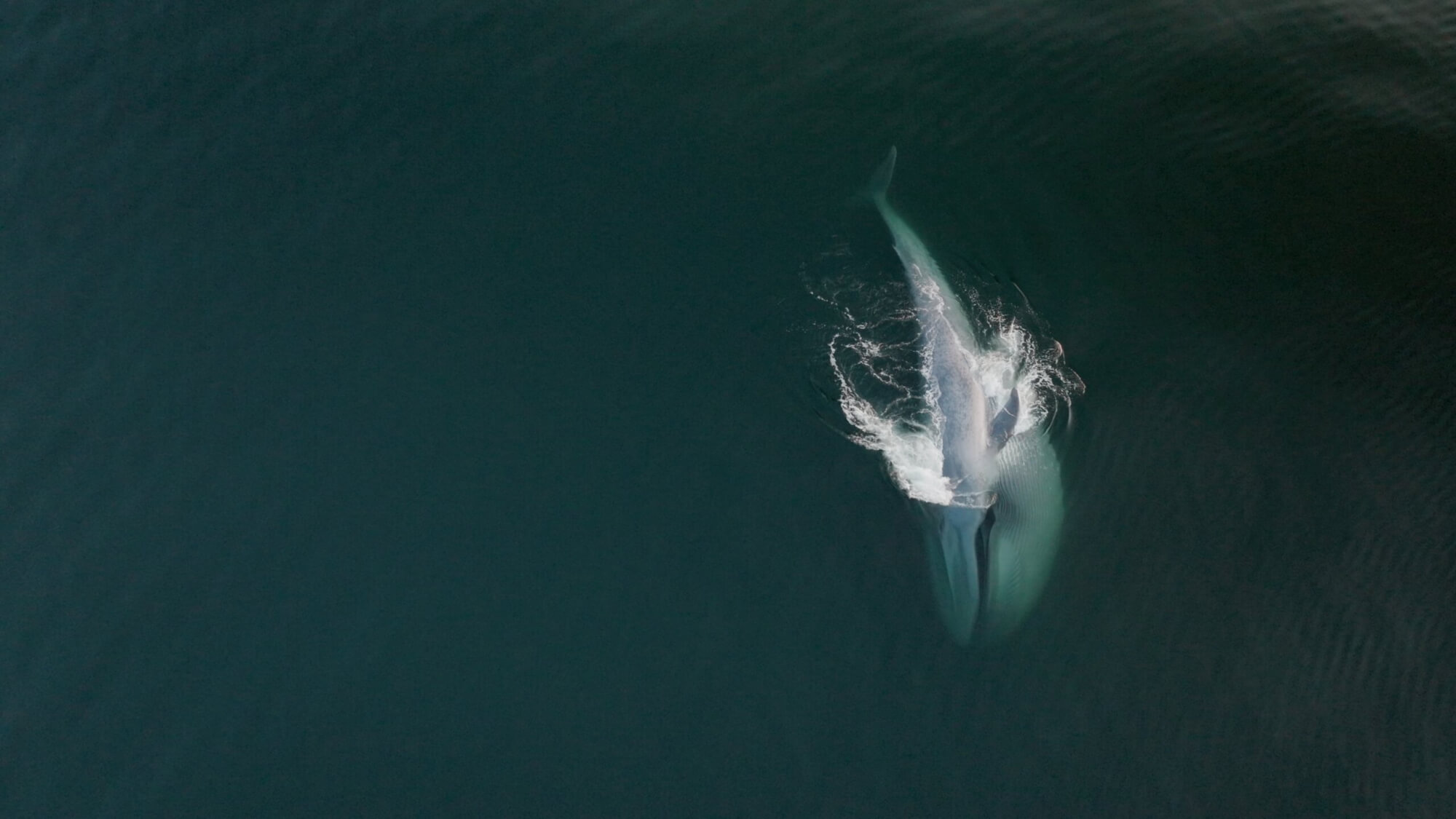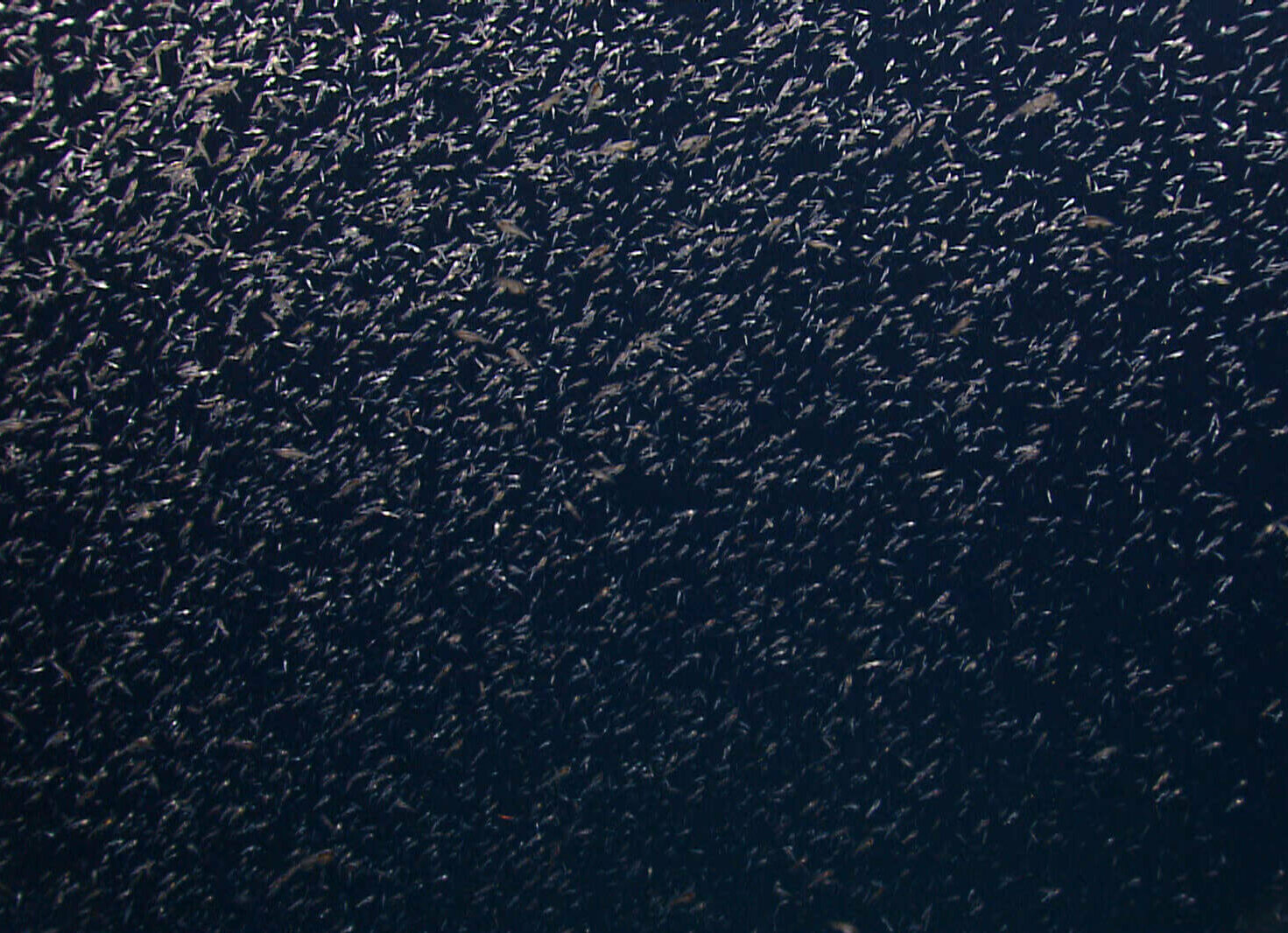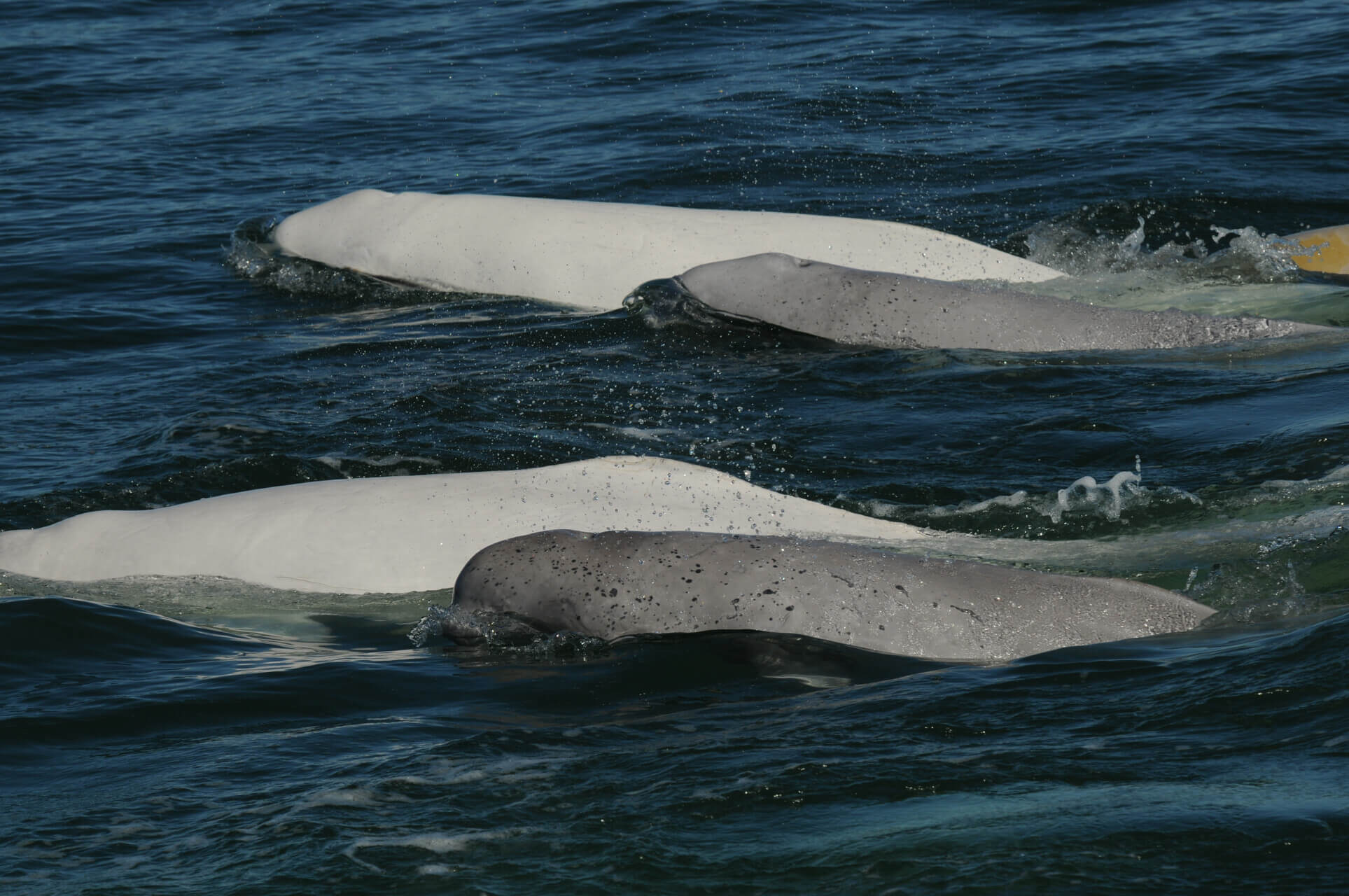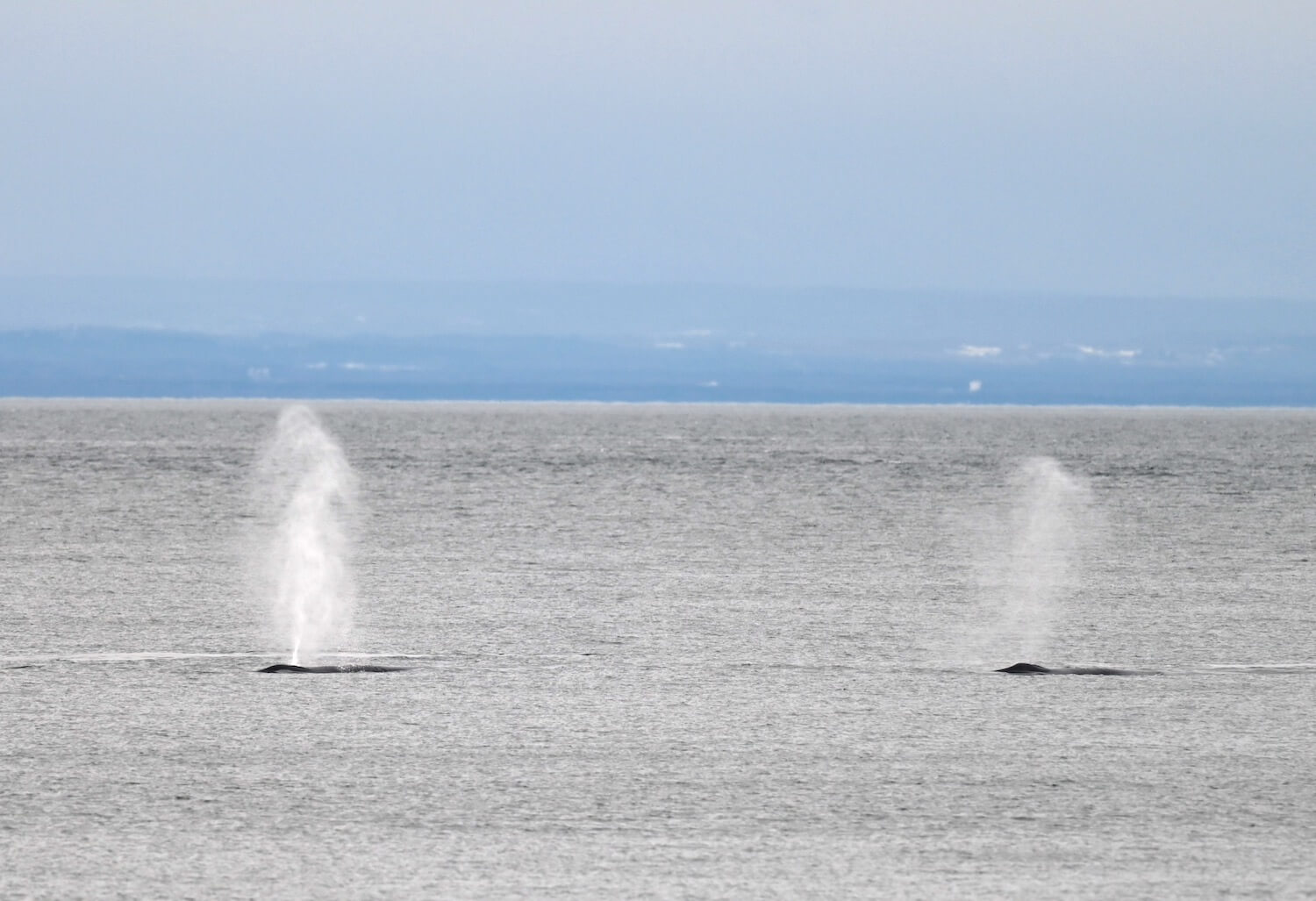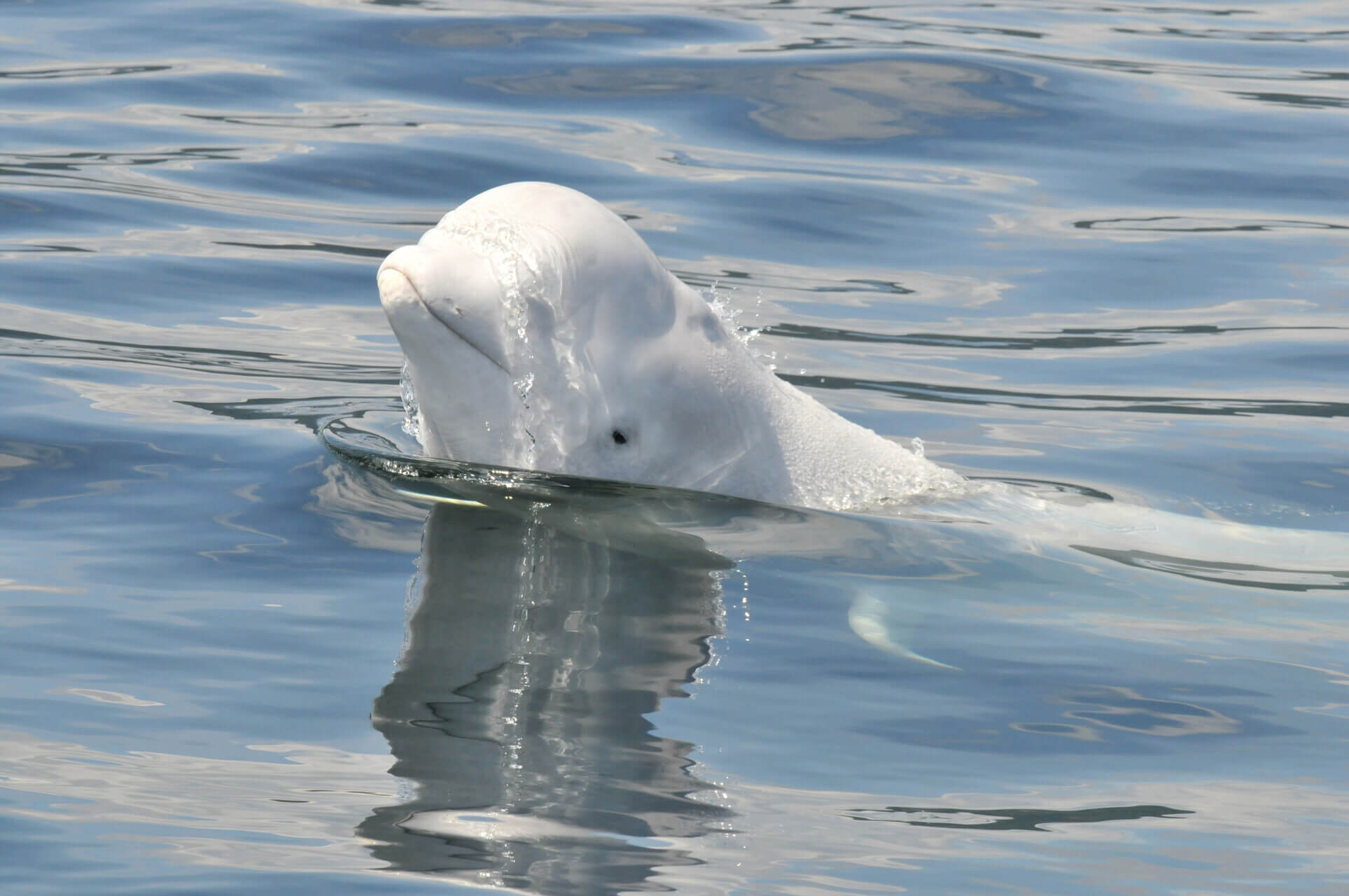While it is not unusual to see large rorquals in the Estuary and Gulf of St. Lawrence in winter, more than 160 large rorqual sightings have been reported to GREMM since the start of 2025. Given that these predators consume impressive quantities of krill and fish, some observers are wondering if there will be enough food to last the rest of the summer!
“This is sort of the million-dollar question we ask ourselves every spring as we anticipate the upcoming season,” writes Samuel Turgeon, ecologist and team lead for Parks Canada. “What kind of year will we have in terms of prey (and large whales!)? More fish, more krill, less prey…” This view is shared by Dr. Jory Cabrol, a Fisheries and Oceans Canada scientist who researches interactions between zooplankton and cetaceans. According to him, this complex issue encompasses a range of other questions that require extensive data sets.
Lack of data
Few observations are reported and little scientific monitoring is carried out during the winter months given the harsh weather conditions on the St. Lawrence. This bias makes it difficult to establish correlations with the impacts observed during the summer.
“Last summer, according to preliminary data analysis, the season was characterized by krill,” explains Samuel Turgeon, whose team conducts annual prey surveys in the Saguenay–St. Lawrence Marine Park. Did this have an impact on the type and quantity of species that showed up in the Marine Park in 2024? Over the course of the season, 13 blue whales and 19 fin whales were identified by GREMM’s team. A total of 27 humpbacks were identified, which is fewer than the years 2021-2023 but still more than the period from 1980 to 2020. However, the abundance cycles, types and distribution of prey as well as predator-prey relationships are concepts that are still poorly understood.
This year, the Centre d’éducation et de recherche de Sept-Îles (CERSI) and Cégep de Sept-Îles are collaborating to analyze zooplankton in the waters of Quebec’s Côte-Nord region. By shedding light on the links between zooplankton, the presence of marine mammals, and other environmental measures, the teams hope to measure the changes taking place in the St. Lawrence ecosystem.
Negligible impact on their environment
At least 11 different blue whales were sighted between January and April. It is estimated that a blue whale can consume up to 16 tonnes of krill in a single day! Krill represents 95% of this species’ diet (article in French). However, the large rorquals that arrive in the spring likely have only a negligible impact on their prey in the St. Lawrence, explains Cabrol.
Abundance of the Laurentian Channel
The Laurentian Channel is a place of extreme abundance and the quantity of prey available is significant. A Whales Online article on the presence of krill in winter explains the phenomenon: “Whales’ nutritional needs are not significant enough relative to the overall krill mass to affect their populations in the St. Lawrence during the feeding season.” According to a DFO acoustic survey dedicated to krill in the estuary and northern gulf (2008-2017), krill biomass was even more abundant in winter (mid-December to mid-February)! It appeared to undergo significant fluctuations throughout the year, but was estimated to exceed 176 t/km2 50% of the time.
According to a 2013 study, only 35% of the total krill biomass in the St. Lawrence Estuary is consumed by predators, including marine mammals, seabirds, fish, and macrozooplankton, amongst others. In 2017, it was estimated that krill biomass exceeded 806,000 tonnes in the St. Lawrence, including 71,922 tonnes in the waters around Les Escoumins. Unfortunately, the latest estimates of krill abundance are unknown. Caroline Lehoux, a stock assessment biologist at the Maurice Lamontagne Institute, expects krill indices for 2018–2024 to be updated within a year or two. Stay tuned!
Other mouths to feed
While large whales do eat a lot, other species consume far more krill and fish than they do! A favourite prey, krill is consumed by a large number of predators other than baleen whales, notably capelin, harp seals, Atlantic halibut, Greenland halibut, and cod. Of the more than 30 predators of large krill (including northern krill), 16 have a very strong trophic relationship, meaning these prey account for over 5% of their diet. Many of these predators, including seals and seabirds, also feed on the small fish species prized by whales such as and capelin.
There is no reason to worry, as even though food has been less abundant this summer, fin whales have an excellent capacity to adapt. With the exception of the blue whale, cetaceans eat not only krill but also have a more or less varied diet of small fish. These animals are capable of quickly changing their feeding grounds in their quest for food. According to a 2021 study, fin whales in the St. Lawrence have diversified their diet – originally based on Arctic krill, which is currently declining due to rising water temperatures – and shifted to smaller fish.
Changes in abundance
Samuel Turgeon points out that changes in abundance in the St. Lawrence appear to be cyclical rather than a sign of a general decline or linked to a higher presence of whales. There are fish years and krill years.
Climate change, changes in the St. Lawrence ecosystem, and natural cycles have a far greater impact on the abundance or lack of food in the estuary than our whales do! Samuel Turgeon concludes that “No one has the answer and there are many different factors” that affect abundance, including interannual variability in prey distribution and climate change in the form of warming waters, oxygenation levels, and changing currents.
To learn more :
- Savenkoff, C., S. Comtois and D. Chabot. Is the change in distribution and abundance of blue whales related to the groundfish collapse in the northern Gulf of St. Lawrence?




